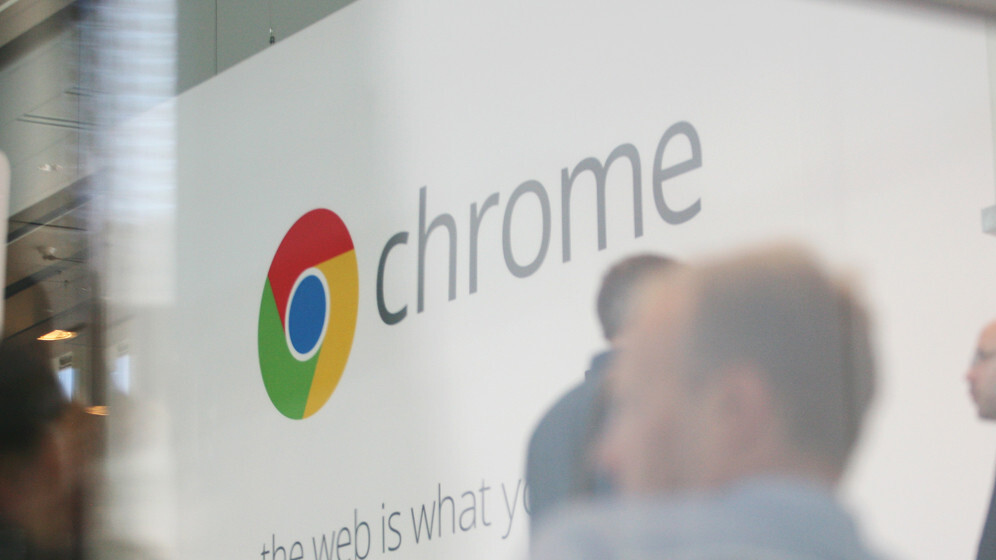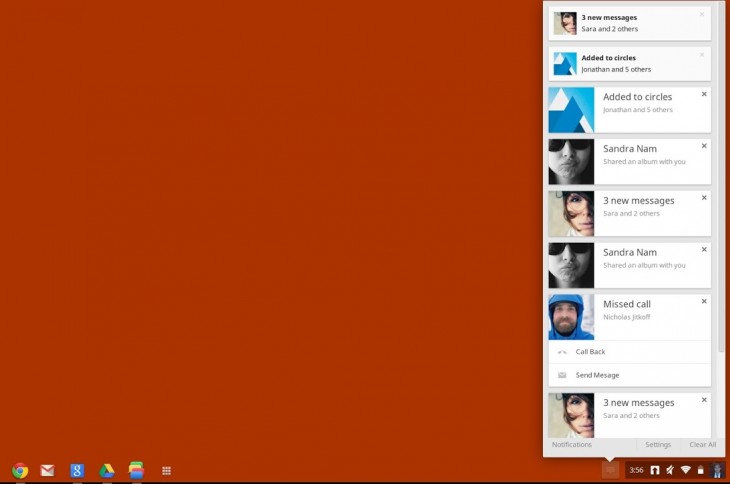
It looks like Chrome OS, the Linux-based operating system created by Google for Chromebooks, will be updated in the near future with a new notification center which looks almost identical to the alerts spotted on Chromium last week.
The feature has been spotted once again by François Beaufort over on Google+ today, and shows an icon pinned to the start menu which looks almost identical to the Google+ Messenger icon.
A screenshot uploaded to his Google+ page shows what appears to be a collapsible notification center, stretching to the top of the screen, with a series of alerts centered around Google’s various in-house services. This includes personal messages, updates on which circles they have been added to on Google+, photo albums that have been shared with them, and even missed calls.

That last missed call notification shows how dynamic this new feature could be too. A couple of the alerts at the top are much smaller than the others, with scaled down display images and text. The missed call notification, in comparison, is much deeper and features additional options such as the ability to call them back, or send a private message.
As with the notification center spotted on Chromium, each update has a cross symbol in the top right-hand corner, allowing users to dismiss it once it has been read or dealt with. There is also the same three options at the bottom – Notifications, Settings, and Clear All – which will most likely allow users to set personal preferences or filters.
A unified Google Messenger, or a notification center similar to that found on OS X, would be a huge leap forward for Chrome OS, adding some much-needed functionality and a link with Google Now at a system level.
Beaufort has also added a link to help users create their own custom notifications using the desktop notifications API on the Chromium Projects website. The webpage says that desktop notifications could be used to provide a “convenient, non-intrusive method of notifying users of events, particularly when those events originate from a background web app.”
As mentioned previously, a similar notification center was spotted on the Windows version of Chromium, the open source web browser project that shares much of the same code and features as Google Chrome. It’s therefore likely that the new feature will be rolled out both for Chrome OS and Google’s wildly popular Internet browser in quick succession, replacing the need for notifications at the top of other Google services such as Gmail, Google+ or YouTube.
Notifications in Chrome OS – particularly in parallel with Google Now cards – could be a powerful way not only to keep users engaged with Google’s web-based products, but also the Android mobile operating system. As I wrote last week, “the genius of Google Now is that it can learn from all of your personal preferences and search history – so having that intelligence on the desktop too will only improve its results.”
We’ve reached out to Google on the matter and will update this article if we hear back.
Image Credit: KIMIHIRO HOSHINO/AFP/GettyImages
Get the TNW newsletter
Get the most important tech news in your inbox each week.





